Guide to Software Requirements Specification in Development

The software development process requires much time and effort from all team members. Still, even the best experts can face inaccuracies in the process of gathering requirements, and this is one of the top causes of project failure. An inadequate specification can make your application less functional and successful than expected. However, you can avoid these misunderstandings by developing a good software requirements specification from the beginning. With well-written requirements, software engineering becomes easier for everyone involved.
Check out this guide to learn more about software requirements specification in software engineering:
- How to define your Software Engineering Requirement
- The main goals of SRS Documentation
- How to write Software Requirements Documentation
- The essential characteristics of an SRS document structure
- Tools you might need to use for your SRS documentation
Whether you are a digital product owner, startup founder, or project manager, this information will be handy for your business. Your team will benefit much from SRS documentation, so don't miss this opportunity to improve your knowledge of the process.
The Software Requirements Specification Definition
To understand how to create a good software requirements specification document, let’s start with the requirements document definition. This article will provide you with the best-understood answer to the question, "What is SRS?"
A software requirements specification, or acronym SRS, is a document that outlines the software requirements of your project. It consists of several sections that define what features and functions your system requires. Software requirement documents are not concerned with the technical aspect of software development as much as with the functionality of the software and the customer’s requirements. Thus, the design documents can help to solve all types of issues related to the behavior of a software application.
A software requirements specification defines the essential business processes that the system must support. As well as this, it allows digital product owners to decide what key parameters should be met. This document can comprise different elements, depending on the implemented methodology. But in general, the main components of SRS are:
- Business Drivers. Opportunities and problems that demonstrate the customer’s need to build the system.
- Business Model. Including essential business functions, process flow schemes, and diagrams necessary for functional system analysis.
- Functional and System Requirements. High-level applicable requirements and comprehensive system requirements.
- Business and System Use Cases. Case diagrams can be used to represent future goals efficiently. To create realistic business use cases, you must figure out the functional requirements. For obtaining system use cases, you will need a system requirements analysis.
- Technical Requirements Specification. All the "non-functional" requirements are necessary for determining more specific functional system requirements.
- System Qualities. SRS elements that can be identified as "qualities" of the system (availability, reliability, maintainability, scalability, etc.).
- Constraints and Assumptions. Design constraints or assumptions that were made when analyzing the software engineering requirements.
- Acceptance Criteria. The criteria that the system must fulfill in order to be complete. For example, fixing all bugs and completing all user acceptance tests.
Having read this software requirements specification definition, what are the advantages of having an SRS? The main benefit of a detailed software requirement document is that it enables clear communication with a client.
A well-formed SRS helps you to identify and gather all the necessary details about a particular industry, so you can avoid delays and extra expenses later on. SRS documents can also help startup founders to set clear company goals.
The Priority Goals of SRS Documentation
A well-written software requirement specification is key to your system's success. Every digital product owner can create a well-designed plan for efficient software development. Moreover, with the proper software requirement documentation, you can reach all business goals.
SRS documents allow product owners and stakeholders to share their specific product expectations. What does this mean in practice? The software requirements documentation tells the team which elements of the system need to be prioritized. This ensures the quality, efficiency, and reliability of the software functionality and performance criteria.
The requirements documentation in software engineering enhances clear communication between customer and client in several ways:
- It clarifies all vital aspects of software development.
- It separates one big problem into more minor issues that are easier to solve.
- It increases the speed of software testing and validation.
- It sets out all the aspects that are necessary to understand project details and deliver the best design solutions so that nothing is overlooked.
- It helps with providing feedback from the client to the customer and vice versa.
Whichever software development methodologies you are using, SRS documentation must always be a part of your project. By outlining the essential aspects of your project in detail, you can avoid many mistakes in software development.
Who Are the SRS Users?
After you identify the priority goals of your software requirements, you will need some information about the SRS users. Some people think that writing SRS documents is only for technical writers. But in fact, this is completely untrue.
Many different specialists take part in preparing software requirements documentation. Business analysts (BAs), project managers (PMs), software engineers, designers, QA/QC engineers, customers, and investors are an integral part of the SRS creation. Each of them has a significant role in the process.
For example, designers and QA engineers work on the system’s functionality and maintenance. BAs, PMs, and software engineers focus on project development from different angles. At the same time, investors use the SRS documentation for making decisions about further investments. With the software requirements clearly defined, customers, in turn, can check whether the company meets its business goals.
Software Requirements Specification vs. System Requirements Specification
It’s important to realize that even though “software” and “system” requirements can have the same abbreviation, they do have different meanings. A software requirements specification (SRS) describes a piece of software that will be developed. As for the system requirements specification (SRS or SyRS), it details the requirements of an entire system.
Here is a handy comparison of these two requirements documents:
- An SRS determines requirements for a specific software product, whereas the SyRS outlines requirements for the system as a whole.
- Because an SRS describes a single software product, a separate document will be needed for each program to be developed. In contrast, an entire system can be outlined within one SyRS doc.
- Neither requirements specification decides on the architecture.
- Only the system requirements specification can specify the performance of the whole system.
Who Is Responsible for Writing Software Requirements Specifications?
A software requirements doc is a tool for communication between software designers and stakeholders. Therefore, the two main participants in the SRS creation process are the contractor and the customer. The customer usually takes the most responsibility for the documentation.
Sometimes, a customer has no idea exactly how the project must look. In other cases, he has too many ideas. In either case, cooperation with the contractor will help you to understand exactly what is needed and create the proper documentation.
Essential Characteristics of a Good SRS Document Example
There are several characteristics you must keep in mind when writing SRS document for your project. Look through this list and compare it to your software requirements to ensure you tick every box:
- Clearness. A good SRS document template should be understandable. Ensure your product's software requirements are clear and easy to read, to avoid misunderstandings with the stakeholders.
- Correctness. It’s important to ensure your software requirements documentation is correct and consistent with the expected system requirements.
- Completeness. The SRS document example needs to provide enough details for software development to take place.
- Flexibility. Your SRS documentation should be flexible enough to allow the updating of various sections.
- Consistency. Make sure your software requirements all fit together without any conflicts. The document should also have a consistent format and use the same terminology throughout.
How to Begin Writing an SRS Document: A Step by Step Guide
Good SRS design creates the groundwork for software development. Thus, you will need to write a functional requirements document first to input into the SRS and enable you to launch a successful digital product.
Check out our guide below on how to prepare documentation for a software project. Then, start planning the steps necessary for your software project requirements analysis.
Build an Outline
The software requirements specification must have a clear and understandable structure. To help achieve this, you can use an SRS document template with an approximate outline and make your own adjustments before approving its final version.
However you create it, a good outline is crucial to the whole software development process. It helps avoid wasting developers’ time and effort reading unnecessary information. Furthermore, it minimizes the risk of excluding valuable data from the process.
Ensure your SRS document includes three main parts: introduction, overall description, and system features and requirements. You can learn more about the best SRS document example in the next section of this article.
Determine the Project Goal
This stage requires an excellent user requirements document, for which you will also need to identify your project's purposes. Flesh out the main goals you plan to achieve and describe them in detail. Next, figure out your target audience and how they could use your product or application.
Structure the description of purposes using the following process:
- Clarify your product's scope.
- Illustrate its value to consumers.
- Specify the target audience for the product.
- Showcase all the product's advantages.
You could begin this stage by outlining your assumptions regarding the functionality of your project. This will make it easier to define the right goals and start working towards them.
Write an Overview of Your Future Project
Another essential part of all user requirement specifications and SRS documentation is the detailed overview. In this stage, you will need to give an in-depth description of the project you're ultimately going to create. Mention all functions and features of the software and define how they will fit users' needs and expectations.
Detail Your Functional and Non-Functional Requirements
After writing the general description of your software, it is time to define its specific requirements. Outlining the various types of requirements in software engineering is probably the most vital part of the process. By detailing the functional requirements of your project, you provide developers with everything necessary to complete their job. Try to describe the way a user will use your application as vividly as possible.
Get Stakeholders Approval for the SRS Document
Once you have fulfilled these four steps of how to write functional requirements, you are on your way to completing the software requirements specification. The next step is to get approval from the stakeholders.
Describe the SRS documentation in detail to capture investors' interest. Make a full-fledged presentation to showcase all the processes within the project. Keep in mind that the stakeholders can ask for some changes, so be ready to update the software requirements at this point.
What Should a Typical SRS Document Include?
Once you have gathered all required information according to the steps given above, you are ready to begin writing the SRS document. Understanding the SRS structure is key to defining the purpose and nature of a software product or application to be developed. Each fragment of the software requirement doc will come in handy during the project.
Check out this scheme to define what a typical SRS document includes:
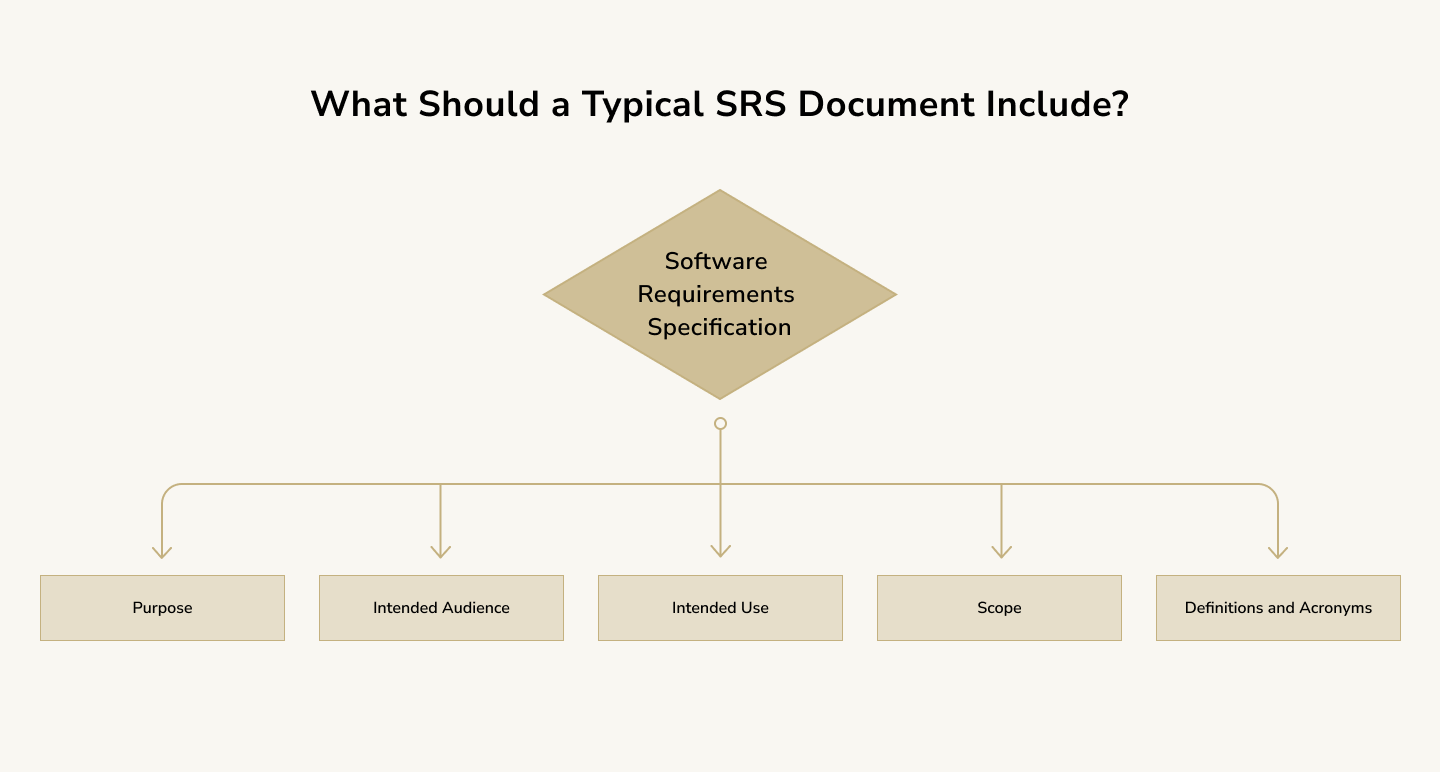
To ease you in creating an SRS document, we have prepared a description of each section. Look at the summary of each section to understand the document’s structure.
Introduction
The structure of the SRS document begins with an introduction. This section illustrates the overall software requirements along with their scope for your team.
Purpose
This subsection communicates the purpose of the SRS document. It includes the types of requirements described in the document and a list of the people who will work with it. A few paragraphs will be enough to discuss the goals of your SRS documentation.
Intended Audience
List all the team members and stakeholders who will take part in the SRS document creation and those who will have access to the completed document. Describe their roles to identify each one's responsibilities within the project.
Intended Use
Identify the cases in which your team will use the software requirements specification:
- determining new functions through brainstorming
- estimating costs and project duration
- possible risks evaluation
- monitoring the team’s success within the project
- dealing with conflicting situations
Scope
This subsection provides a brief representation of the system. You can describe the project from a more technical angle, mentioning its functionality and positioning.
Illustrate the users that are expected to interact with the system. Explain why this software development solution is unique. Thus, you will be able to interest stakeholders and gain more investments in your project.
Definitions and Acronyms
Describe all specific terms mentioned in the requirements documentation in software engineering, to avoid misunderstandings with new developers. Name business entities and stakeholders with a particular abbreviation to speed up the process of SRS creation.
Overall Description
The second section informs the parties about the system's scope and functionality.
User Needs
Unlike the previous subsections, this one can be omitted from the SRS. However, if you want to outline the user problems that you intend to solve, it is better to add this part, as it will be helpful during brainstorming.
Assumptions and Dependencies
Describe your assumptions towards the product development to see its possible ways of growth. This is how you can focus on the main aspects of your project's functionality.
System Features and Requirements
The third section comprises the product functionality descriptions, along with its execution criteria. The following sub-categories can break this part down:
- functional requirements
- external interface requirements
- system requirements
- non-functional requirements
Functional Requirements
Functional requirements are product features or functions that must be implemented. Make a list of all functional system requirements for both developers and stakeholders. Start with defining the most vital functions, and then illustrate all details of each feature. Don't focus on the technical aspects of the product functionality; rather, characterize its features from the users' perspective.
External Interface Requirements
There are four types of external interface requirements you can use for your project:
- user interface
- software interface
- hardware interface
- communication interface
External interface requirements illustrate how the application will appear from the client's perspective. The list of these requirements may involve various design elements needed for product development.
System Requirements
System requirements in software engineering are the characteristics and limitations necessary for product performance. The SRS hardware requirements typically vary from minimal to the maximal value. This process can be challenging, especially at the beginning of product development. However, you can't miss this step out, as all developers have to meet the hardware standards.
Non-Functional Requirements
Whereas functional requirements describe what a system should do, non-functional requirements outline how the system must behave. They describe quality attributes of the system that limit functionality. This section comprises features such as security, usability, and performance thresholds.
The Best Techniques for Creating an SRS Document
Considering the number of ways to define the client’s needs and wants, it would be overwhelming to use them all. Furthermore, methods that fit one project well may be less useful for others. So, it is crucial to find the most productive and beneficial methods for your project when creating an SRS document. Check out the best techniques you can apply to your software specification document:
- Brainstorming. This method is perfect for identifying creative solutions to various project challenges.
- Document Analysis. The complex analysis of existing documents in order to identify the system requirements. It includes examining business plans, agreements, process flows, and other documentation.
- Interface Analysis. Helps to define the project boundaries and functionality using different types of interfaces.
- Interview. This technique allows effective communication with everyone engaged in the project. You will need to prepare questions beforehand for maximum benefit.
- Prototyping. If you need to create a test version of the solution for your project, this method is perfect for you. It allows for building a base that will demonstrate the concept for further idea analysis.
- Mind Mapping. Helps to build up a picture of the relationship between all components of the system.
- Focus Group. A group of people discusses different functions and aspects of the system as users or customers. This allows new software requirements to be defined, or existing ones validated. How does it work? It includes analyzing users' feedback, client's needs, product opportunities, key features, etc.
- Requirements Workshop. Using this technique, you can quickly determine cross-functional requirements for the future product.
Tools for Clear SRS Documentation
The crucial goal of the software requirements specification in software engineering is to be clear and unambiguous. But how to create understandable SRS documentation? Collect and organize the information using specific pre-established tools to create a visual representation. Apply one of these practical frameworks right away: read on to learn more about them.
Context Diagram

The context diagram comprises essential and additional parts of the project. It can be used for collecting all the existing elements into a bigger picture to see the system as a whole.
Forget about scanning huge documents full of technical software product specifications. With this SRS tool, you can instantly get a clear visualization of the future project.
Functional Decomposition

The visual characteristics of this SRS tool are similar to the context diagram. Yet, their structural principles differ significantly. With functional decomposition, you can split the system functionality into smaller structural parts.
The main advantage of this tool is the ability to define the most meaningful features. Thus, you will get a clear understanding of the dependencies of the functions within the system.
Use Case Diagram
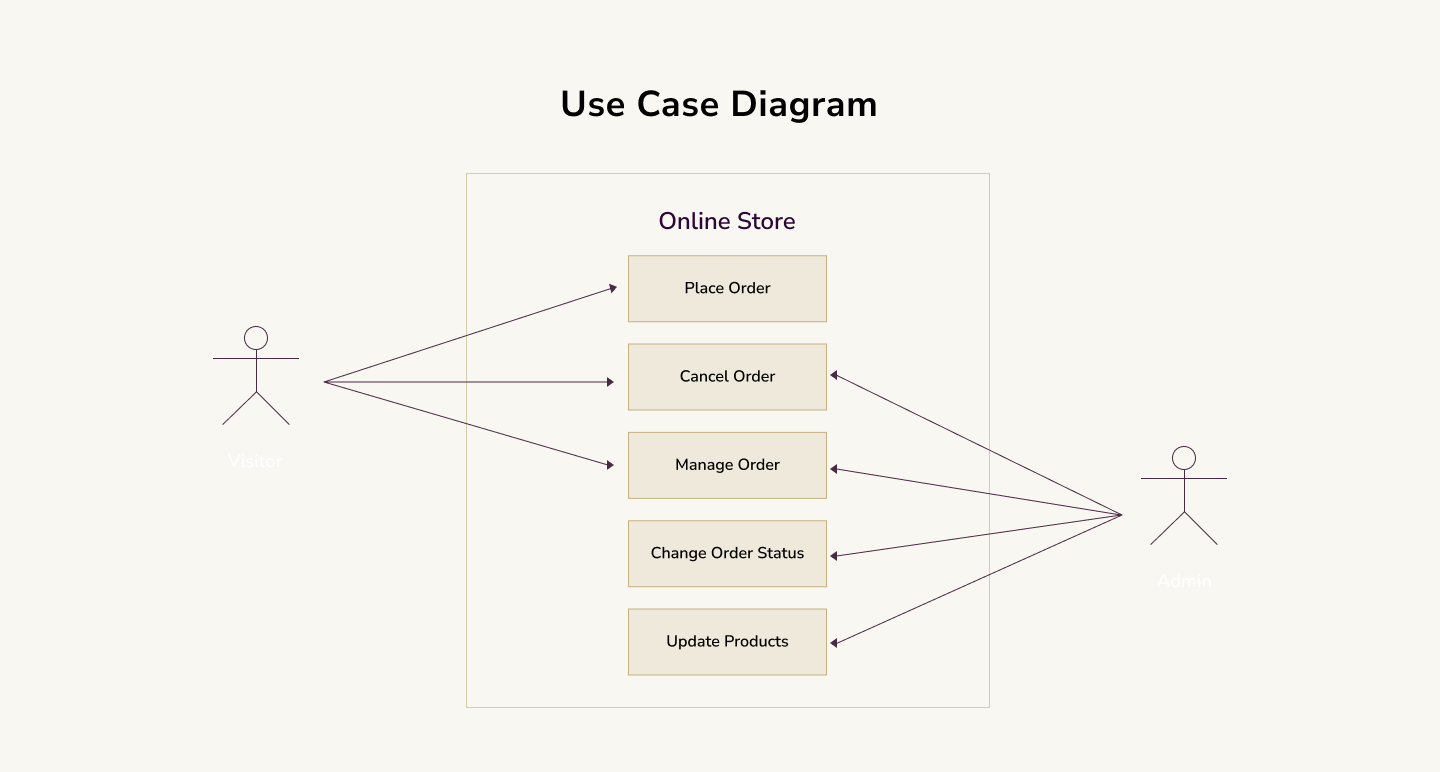
Unlike the previous software requirements specification tools, this one focuses on the system functionality. A use case diagram showcases interaction between users and features. Using it for your software engineering documentation, you can build the “User Needs” section.
Sequence Diagram
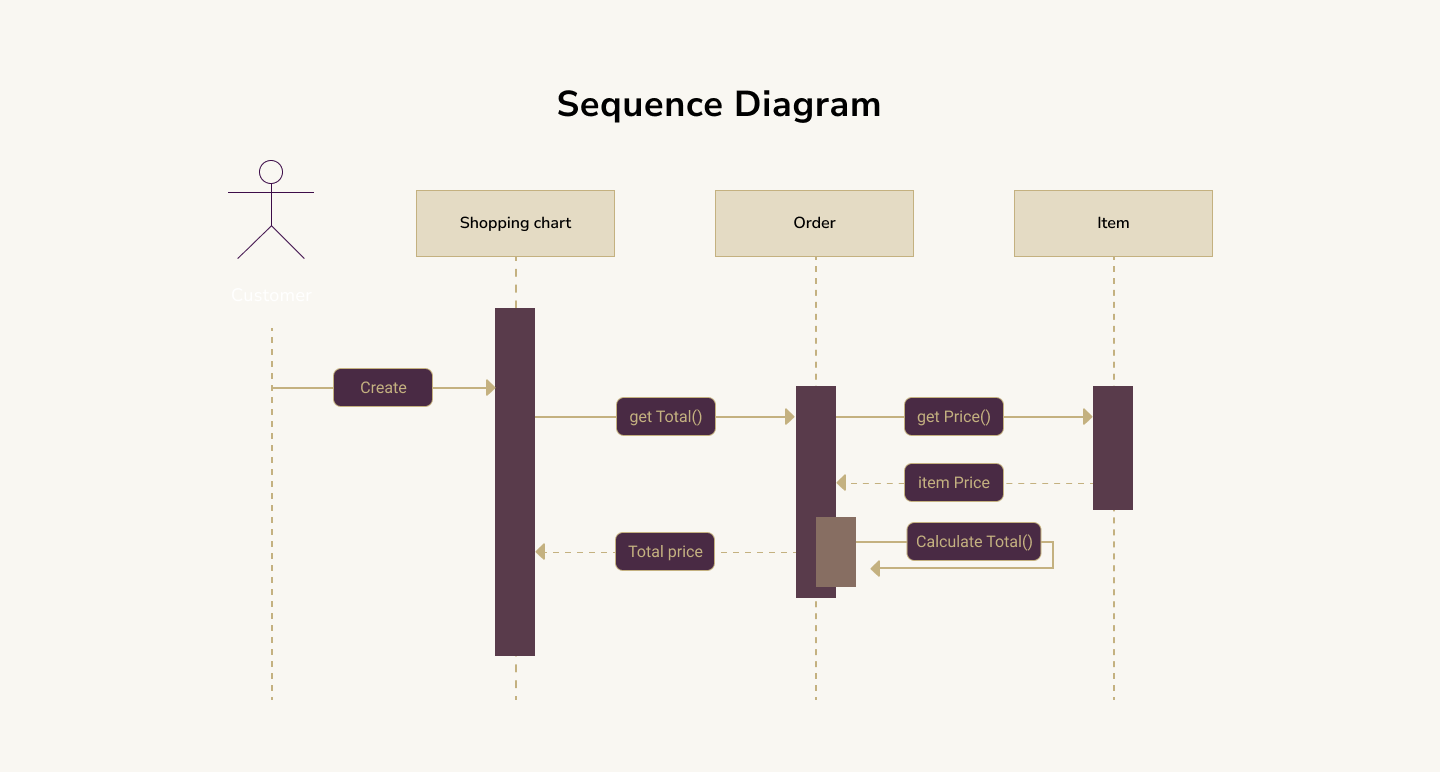
Want to see how functionality in the system can interact and develop in the future? Sequence diagrams can showcase this process in detail. Use this software requirements tool to define how a given function or feature changes over time or in response to different user inputs.
As-Is and To-Be Process Model
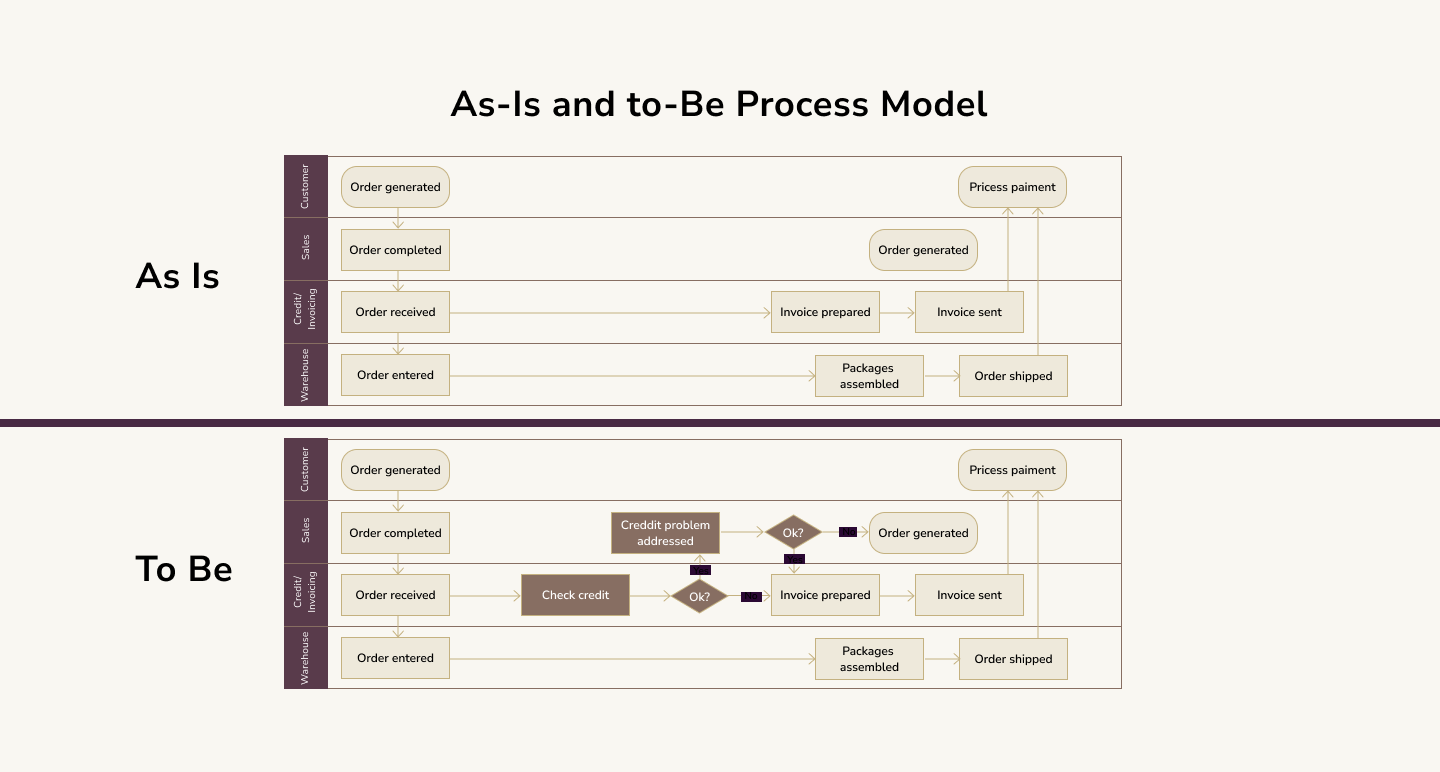
The purpose of these two diagrams is to show how various business processes influence software functionality. These process models also describe the users, middlemen, and final stakeholders' development perspectives. The AS-IS diagram illustrates current techniques for identifying all possible risks and problems. The TO-BE model showcases the ways of transforming and improving the existing software processes.
User Stories
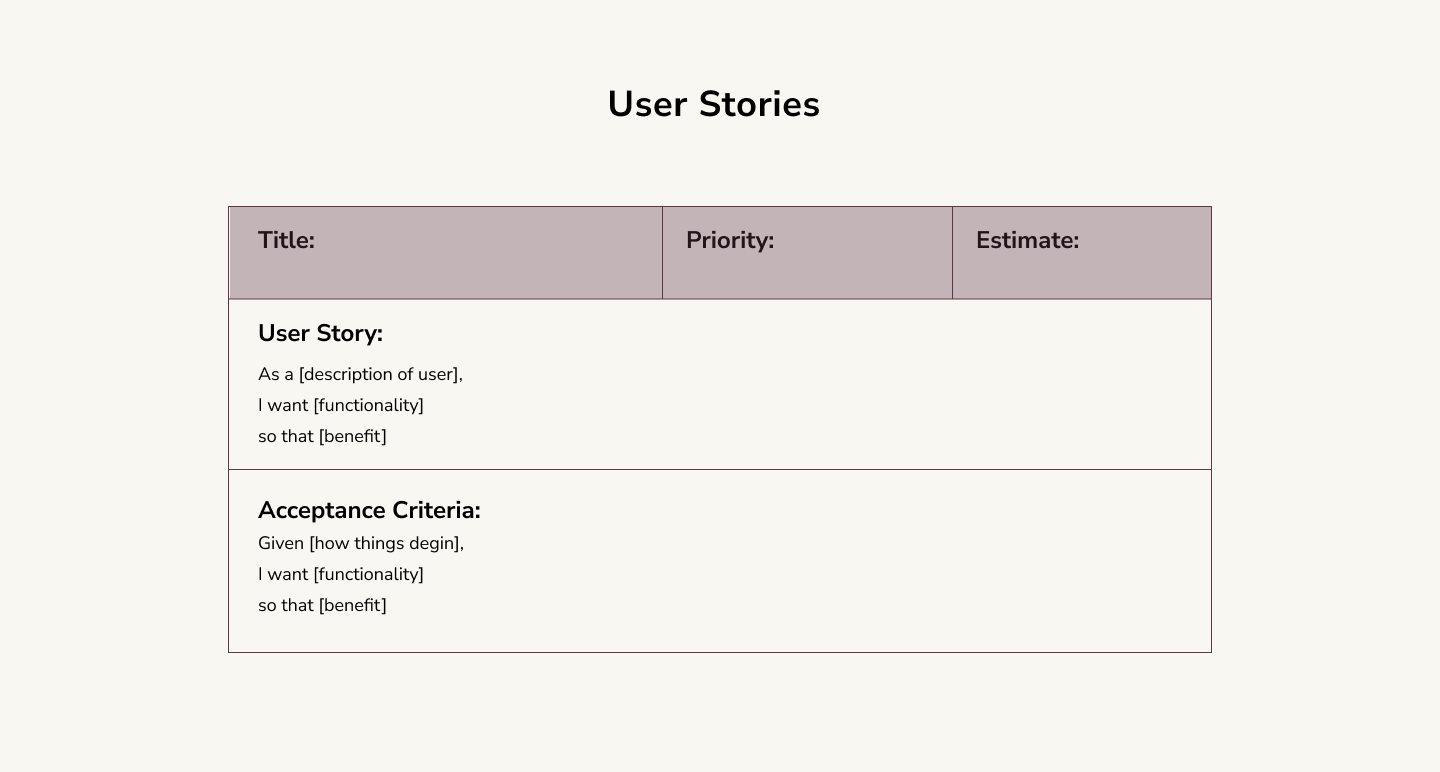
This software requirements specification tool illustrates actions that can be performed with the software. Using this method implies a multi-step process that starts with creating a user account. Thanks to such an approach, you can check a series of user cases like setting up a profile, confirming emails, etc.
Epic user stories access entire blocks of the software functionality. Split a sizable epic story into several smaller ones by means of decomposition, to maintain the SRS’s document readability.
Mind Maps
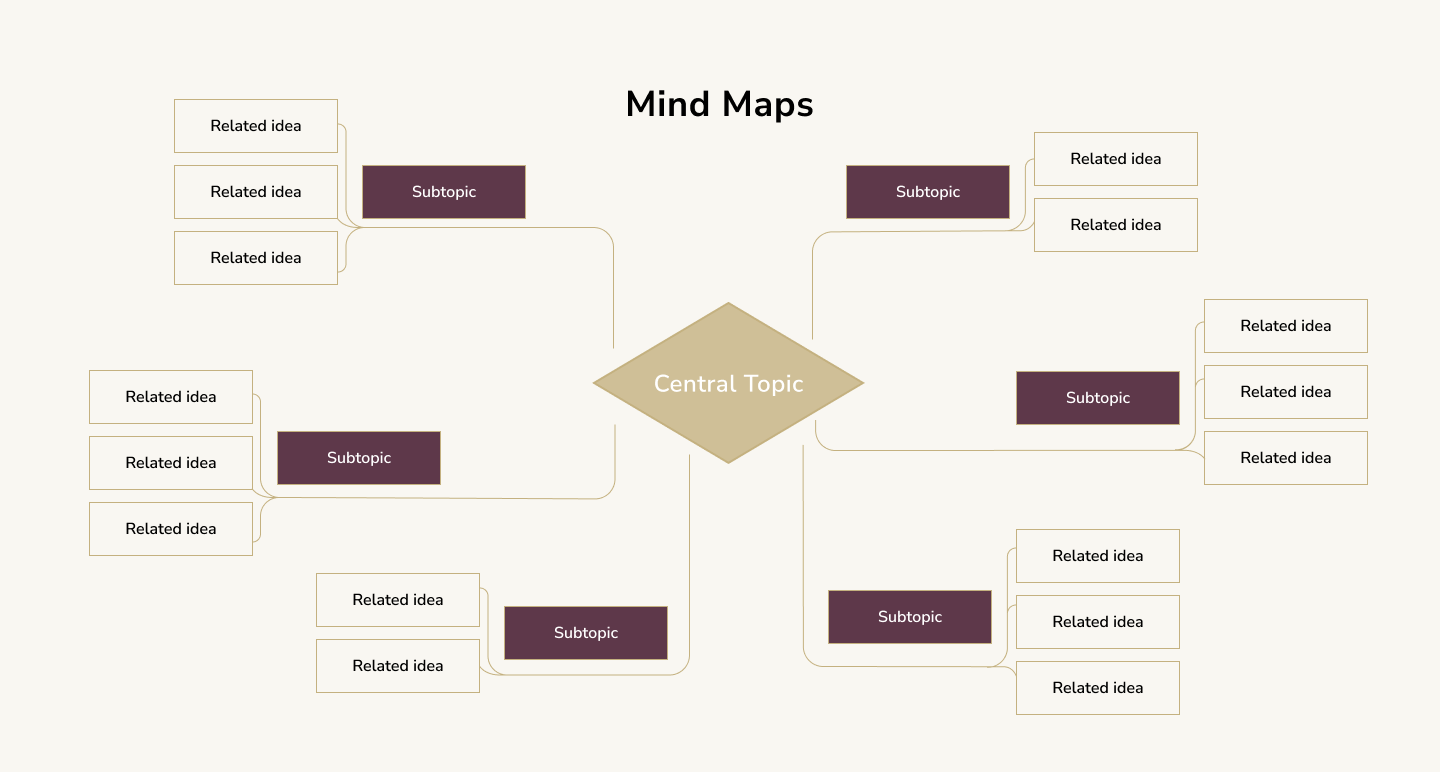
As a rule, this SRS tool is applied during brainstorming for better teamwork interaction. All members of your team can use it in real-time for creating an up-to-date SRS mind map. Implement this method in each section of the software documentation to define its most critical components.
A Clear Software Requirement Specification Example
There are many software requirements specification templates on the web. Even so, we highly recommend you to check out the following example. Look through this description of an SRS document structure for an eChat app, to create a picture of your future project.
Introduction
The introduction of this software requirements specification example comprises:
- the instructions for downloading and operating the app
- the estimated scope of the app's development
- a description of the technology used for project development
- the metrics necessary to figure out the project's progress
The document illustrates a detailed project plan for the efficient development of the eChat app. All the team members, including developers, designers, and testers, will understand how to develop the product.
Overall Description
The “eChat” is a perfect solution for remote workers. This application combines text and video chats, meaning people can use it for conferences and meetings.
Customers
The project is targeted at a narrow range of clients. The main customers of eChat are expected to be enterprise companies.
Functionality
Here are some user requirements specification examples that you can use for your functional requirement document:
- The app should support group video chats (up to 100 users at a time).
- Users should be able to register with enterprise LDAP accounts.
- Users should be able to create ad hoc chat groups.
- Users should be able to break their text chats into threads.
Development Responsibilities
The “eChat” developers will be responsible for writing all the code for the app and developing the database.
Functional Requirements
- Users should be able to create ad hoc chat groups and send private messages.
- Users should be able to archive chats.
- Users should be able to upload files to chats for reference.
External Interface Requirements
If you are looking for a good interface requirement specification example, check out this list of requirements:
User Interfaces
- Front-end software: React Native
- Back-end software: .NET Core
- Database software: MySQL
- LDAP connection: Authentication in an enterprise environment
Hardware Interfaces
- Mac
- Windows
- iPhone
- Android
Non-Functional Requirements
- The time of the application loading must be equal to 3 seconds.
- The application should update the interface within 2 seconds.
- The database should be normalized to improve performance.
- Backups of the databases should be kept for one week.
- Any keys used for the REST API should be stored securely.
This concludes our example of SRS documentation for an “eChat” app. Now let’s have a look at how developing an SRS document fits within a Software Development Life Cycle.
SRS Doc Within the Software Development Life Cycle
Software requirements specification provides QA engineers with straightforward tasks. Thanks to this specification, developers understand how to make test cases, and technical writers create user manuals.
However, not all digital product owners know that SRS creation may differ depending on which development life cycle you are using. (You can learn more information about SDLCs in our guide to software development life cycle models.) But now, let's define how some popular SDLC models affect the way an SRS document is developed:
Waterfall. This option is perfect for less experienced developer teams. The waterfall model doesn’t require a fast pace; in fact, it allocates more time for writing an SRS document. If you require detailed requirements for your project, you should use this SDLC.
Agile. Such a model implies that a Business Analyst will be constantly updating the SRS document. This option fits companies that are planning to test every software requirements model and make frequent changes.
Scrum. With this model, you can develop the SRS doc very quickly. Thus, it is perfect for skilled developers. Such an approach allows a product owner to focus on this one long-term project.
Now you have read all the information about what is SRS and why it is so essential for your software development. After learning from this article how to write a requirements document, you can create a detailed specification that will set efficient communication with your team and customers right from the beginning. Apply the techniques mentioned here to build excellent SRS documentation right away.
If you liked this article, then check our pieces about writing a request for proposal (RFP), creating a roadmap, and everything you need to know about technical documentation.
And if you are interested in web or mobile development, contact us!

Roman Zomko
Other articles